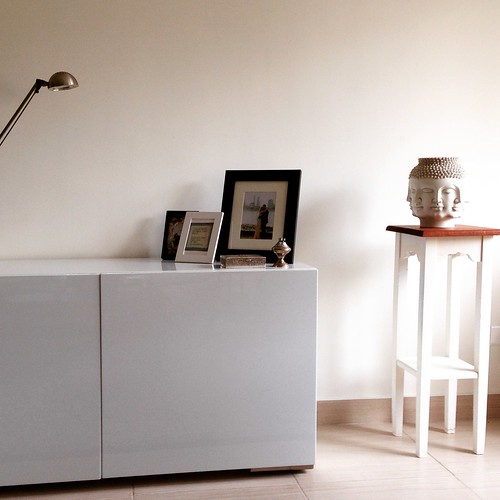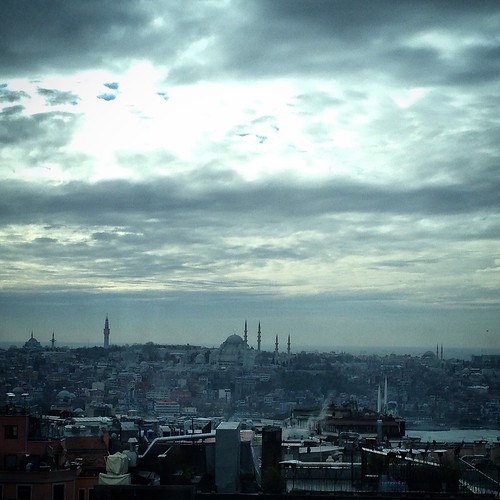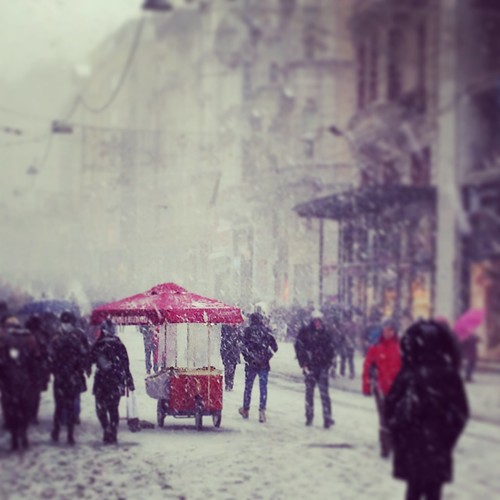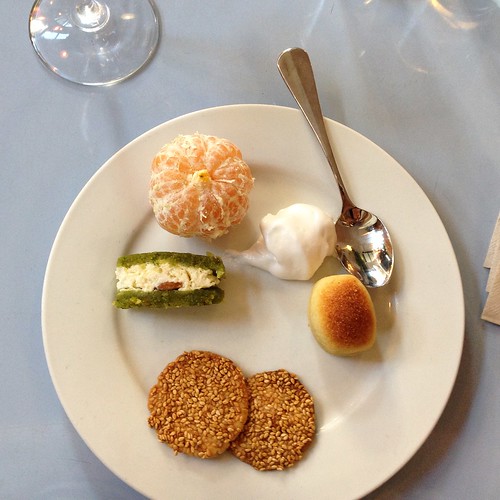
Well then. 2015! What does 2015 have in store for you? Last year, we came into the year knowing roughly how the year was going to play out. I started 2014 knowing that we'd be moving several times, and we did, a total of four times, which is why I dubbed it the Year of the Nomad. I also knew that we'd most likely be buying our first home, which we did (!), and which I couldn't be more than thrilled with. We went from Algiers to Chicago to Cairo, and just last week all of our possessions finally caught up with us in Cairo. You can see a few of them up there, in that picture that is cropped so that it does not picture the mountain of boxes and tissue paper behind me.
So 2014 kind of played out roughly how we expected, but 2015? I really don't know. We'll continue to settle in here in Cairo, hopefully squeeze in some fun vacations (ever since I read this piece I am dying to go to Crete). I have a new pile of cookbooks, as well as my old favorites, that I'd like to keep working my way through. Which brings me to todays recipe for stuffed onions, Syrian style.
I have been wanting to make these stuffed onions, which consist of a meat filling rolled inside onion skins and braised in a tomato-y sauce, for years (years!), but I was always intimidated by separating the onion layers. Somehow in my mind this dish seemed more difficult than the other stuffed dishes, like stuffed zucchini or eggplant. And, I know what you're thinking, you're thinking if SHE thinks this dish is complicated then there's no way I'm going to make it!
But hear me out here folks. These stuffed onions are actually surprisingly easy to make! Really, separating the onions is really easy, they basically fall apart on their own, and stuffing them with the meat mixture is super simple. It takes no more time than making meatballs, and is certainly easier than coring zucchini. You simmer the stuffed onions in a tomato and molasses-y mixture for a longtime, until the onions are as sweet and supple as caramelized onions. Caramelized onions stuffed with a flavorsome meat mixture is my idea of a good dinner. Despite my paltry kitchen photo below, the end result looks far more impressive than the amount of effort put into it. It's a good start to a what I hope is a good year!

Syrian Stuffed Onions
This is one of those classic dishes that's all about making something luxurious with very little. The stew cooks for a very longtime, a total of nearly 2 hours, which really draws out the best caramel-y flavor of the onions. Serves 2-4, you could easily double this for more people.
for the stuffing:
olive oil
1 shallot, diced
6 cloves garlic, sliced
1 tablespoon tomato paste
1/2 teaspoon cinnamon
1 teaspoon cumin
1 teaspoon salt
1/2 cup golden raisins
3 tablespoons water
1 handful parsley, chopped
1/2 lb ground beef
2 tablespoons rice
for the stew:
7 very large shallots or 5 small onions
1 tablespoon tomato paste
2 tablespoons carob molasses or date or regular molasses
1 teaspoon lemon juice
1 cup boiling water
1 tomato (optional)
1. Make the filling: Heat some olive oil in a wide deep skillet. When hot, add the shallot and stir over medium heat until starting to become translucent. Add in the garlic, cinnamon, cumin, and the tomato paste and stir to combine. Let cook another minute or so. Add in the salt, water, and golden raisins and stir everything together to combine. Let cook for a minute, stir in the parsley, and then pour the mixture into a mixing bowl. Set aside the skillet
2. Add the ground beef and rice to the mixing bowl, and stir the filling mixture together to combine. (Use a metal spoon to mix, or knead together with your hands.)
3. Prep the onions: Meanwhile, heat a large pot of water to boiling. Remove the ends of the shallot or onions and peel off the papery skins. Cut a slit lengthwise through the onion only to the middle. Plunge the onions in the boiling water and let cook for 7-12 minutes, or until the onions are soft enough to be pliable. Drain the onions and set aside to cool.
4. Prep the pan: When cool enough to handle, separate the onion layers. Take the very center bits of the onion, with the smallest layers, and use those to line the bottom of your skillet. If using the tomato, use the slices to line the skillet over top the onion bits.
5. Stuff: Place a tablespoon of filling on one of the onion layers and roll up tightly. If desired, roll the stuffed onion in another onion layer. (I like two onion layers best, but sometimes you have to do one if you start to run low on onions.) Depending on the size of the onions, and the amount of onion/filling I have left, I roll the filling in anywhere from 1 to 3 layers of onion skins. Lay the stuffed onions in the prepared pan on their sides. Continue until you've used up all filling or onions, whichever comes first.
6. Cook: Preheat the oven to 350F. Dot the tomato paste in between the onion rolls. Drizzle the molasses over top the onions. Pour the lemon juice and the boiling water over top. Sprinkle the whole thing with salt. Bring the pan to a simmer on the stove, then cover and simmer for 30 minutes. Transfer the pan to the oven and cook for 1 hour, covered. Uncover the pan and cook for another 20-30 minutes, or until the sauce around the onions is reduced and caramelized. Serve warm with rice.








